How Much Does ABC Trek Cost? A Detailed Guide
The Annapurna Base Camp Trek, also known as the ABC Trek, is a central heart core and one of Nepal's most breathtaking trekking varieties. Situated in the heart of the Annapurna region, this trek offers excellent views of towering peaks, including Annapurna and Machapuchare, along with a close-up glimpse of the region's rich cultural heritage.
However, before deciding to pack your luggage, it would be pertinent also to be familiar with the expenses. If someone is searching for a less expensive trip, but in the same time wants a more comfortable ABC Trek planning the trip, that knowing the exact price rate per person definitely seems necessary.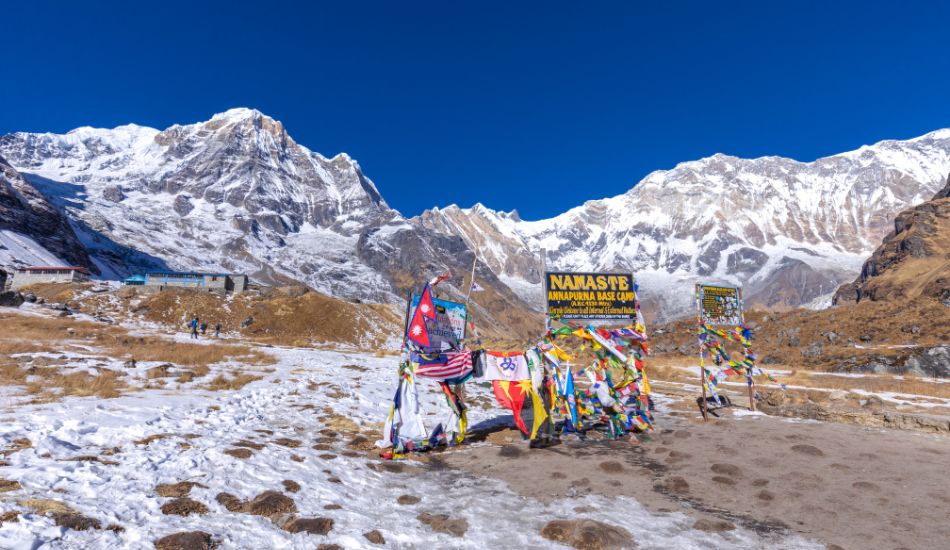
What is the ABC Trek?
The ABC Trek goes through some very nice landscapes, from terraced rice fields and rhododendron forests to a panorama at high altitude. It is a moderately hard trek, taking 7–12 days to complete, which again depends upon your itinerary for the ABC trek. These routes will provide the best natural beauty and an immersive experience with the local cultures of Gurung and Magar.
Why Understanding Costs is Important Before Planning
- It helps develop a realistic budget for all expenses and avoid over-expenditure on useless expenses.
- Comforts and budget-based customization of an ABC trek package for Nepali international trekkers.
- It will avoid any kind of unnecessary expenditure that gives way to stress while trekking.
- Cost differs by season; knowing this helps you plan for the best value during peak or off-peak times.
- Knowing the permit fees, such as ACAP for the Annapurna Conservation Area and a TIMS card, will help with proper budgeting.
- Whether to hire a guide or a porter determines the overall cost; hence, understanding helps weigh the benefits against the expenses.
- Understanding the distribution of costs within accommodation, meals, and transportation means you can allocate your budget effectively.
- Small expenses, like Wi-Fi and gear rentals, add up; awareness helps prepare an overall budget.
- A clear understanding of the costs enables prioritization of what matters most in creating an enjoyable trekking experience.
Recommendation Read: Tips for Trekking to Annapurna Base Camp
Factors That Influence the Overall Cost of the Trek
1. Season of Trekking
The cost could depend on the season you're planning to go. Peak rates are quite steep during spring—from March to May—and autumn—from September to November—due to the high demand for lodges and guides. Trekking out of season is cheaper but has setbacks, such as not-so-good weather conditions.
For more detailed information, read our blog Best Tiime to Visit Annapurna Base Camp
2. Guide and Porter Services
However, hiring them increases your cost and may make your trekking easier, especially if you are unaware of the ABC trekking routes. The local guide knows the region and can help you explore the place nicely.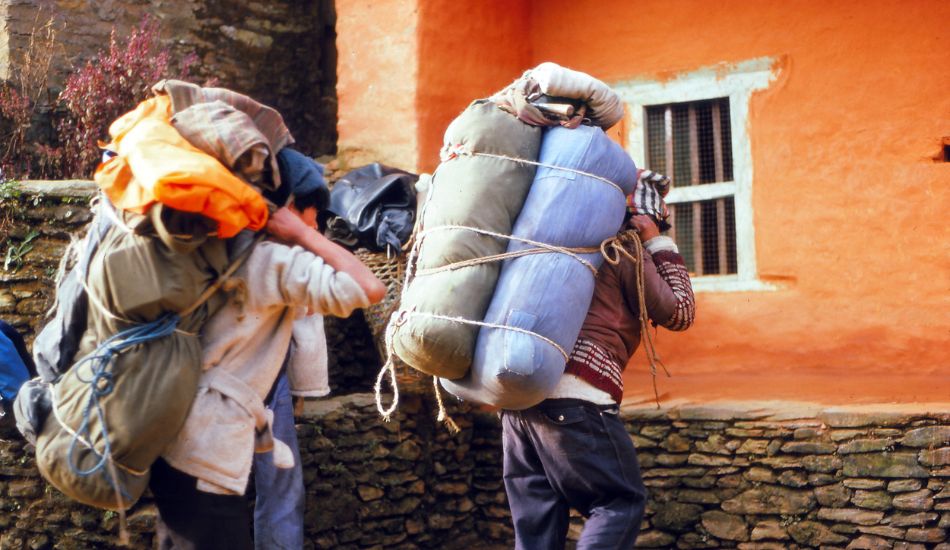
3. Permits and Entry Fees
Trekkers must acquire permits. For example the entry fee to Annapurna Conservation Area, which is called as ACAP, a TIMS, and the Trekkers’ Information Management System card. There are three inner line permits required for both Nepalese as well as foreign trekkers.
4. Accommodation and Meals
Accommodation on the ABC trek trail varies from basic tea houses to more comfortable lodges. In the same way that accommodation does, meal prices can also vary based on height and accessibility; the higher you go, the more expensive food will be to carry up by porters or mules.
Once these factors are known, you will know what to expect and how much the ABC trek cost for Nepali and international tourists.
Breaking Down the Cost
As you plan your trek to Annapurna Base Camp, the costs of the various components ought to be clear to you. Thus, here is an overview of the typical expenses on the trek and their cost.
Trek Permits
Basic trekking in the Annapurna region requires an Annapurna Conservation Area Permit and a TIMS card for all trekkers. These permits protect the environment and ensure that trekkers can be accounted for in the region.
ACAP Permit: This must be paid for by every trekker and costs approximately $30 to $50 for international trekkers, depending on the time of year or changes in policy and rules.
TIMS Card: Most often included in the overall cost of a trek, this card has become crucial to managing trekking information. For international trekkers, it costs around $10 to $20.
Total Permit Cost: You should expect to pay between $30 and $50 for the pair of permits, an absolute steal for the right to trek through some of the most beautiful parts of the world.
Transportation
Transportation costs vary, depending on how you would like to get to the beginning of the ABC Trek Route. Most trekkers make their way from Pokhara to Nayapul via taxi or bus. Options are available for different budgets.
Taxi from Pokhara to Nayapul: The drive from Pokhara to Nayapul is relatively more convenient and flexible; it costs $15 to $30, depending on negotiation skills and the time of day. This is a good option if you are in groups because you can split the cost.
Bus from Pokhara to Nayapul: The bus is the best budget option, costing around $5. Though less comfortable, it is a good way to have fun with local travel.
Domestic Flight from Kathmandu to Pokhara: If you're from Kathmandu, you might want to consider the domestic flight that costs $100-$150. This will save you time and give you beautiful mountain aerial views.
Accommodation
Food for the ABC trek itinerary can be bought from the teahouses en route though some are quite basic and other trekkers prefer somewhat more up-market lodges though costs vary greatly. It is important to understand that the place you choose to stay in can either make or break your trip.
Budget Tea Houses: Budget tea houses are the most basic accommodations available, costing $5 to $15 per night. While they offer few comforts, they offer great opportunities to interact with fellow trekkers and local families.
Mid-Range Lodges: For those who need more comfort there are ‘mid-range’ lodges available. The services are much better within this brand and cost more or about $20 to $40 daily. Other amenities such as hot shower and private room are not a precondition in these lodges and they are indeed comfort after a day’s hike.
Luxury Accommodation: The high roller will find luxury accommodations for over $60 per night. Facilities will be upgraded, and magnificent views of the surrounding mountains will be treated.
Average Total Accommodation Cost: For budgeting purposes, accommodations can range from $5 to $60+ per night, depending on the trek length.
Meals and Drinks
Food prices on the trek vary greatly depending on the altitude and locality. Meals will probably play a significant role in your daily budget, so it's good to know what to expect as you trek through the Annapurna region.
Meals in Lower Regions: The meal price in the lower region of the trek is generally around $5 to $10. One can get dal bhat noodles and momo—delicious and budget-friendly.
Meals at Higher Altitudes: The higher the altitude, the higher the meal cost due to higher transportation costs. The minimum cost for a meal can be $15.
Daily Meal Budget: You could safely estimate that a meal budget would be $15-$25 per day because this would cover some breakfasts, lunches, and dinners, as well as other miscellaneous snacks and drinks.
Guide and Porter Fees
If you hire a guide or a porter the impact of the trekking will be much richer. As for the trek, the guides or porters come in handy when it comes to helping you with other logistics about the region.
Guide Fee: A professional guide charges between $25 and $30 per day. They can tell you about the culture of the area you're visiting, help you navigate, and ensure your experience is safe.
Porter Fee: You can hire a porter for an approximate fee of $15 to $20 daily. This cost includes porters who will carry your main heavy gear and, as such, provide comfort during the trek.
Total Guide/Porter Cost: This again depends on the duration of the trek; hence, the overall guide and porter cost for hire will differ accordingly. It would be great if you could share this cost with your fellow trekkers for economic viability.
Gear and Equipment
Trekking gear investment will pay off when it is time to take to the trail. You can rent gear in Pokhara, saving cash yet still having what you might need for the trek if you don't have all of this gear.
Renting Basic Gear: If you rent basic gear, you should expect to pay 5-15 dollars per day per item, including a sleeping bag, trekking poles, or jacket. This will be relatively cheap and highly advisable for anyone who doesn't trek often.
Buying Gear: Gear prices vary greatly depending on the quality and brand. A good investment in quality will enhance your experience and ensure you are well-prepared for the trek.
Miscellaneous Expenses
On a trek in the Annapurna region, several small expenses will eventually crop up, adding up over time. Knowing what these expenses are will help you budget better.
Wi-Fi Access: You can access Wi-Fi at an estimated $1 to $5 per hour. While this is a great convenience, remember how spotty service can get in more remote areas.
Charging Devices: Depending on the lodge, some charging outlets may need extra fees at an estimated $1 to $5 per charge. Don't forget a power bank for extended life.
Hot Showers: Most lodges also offer hot showers, which cost $2 to $5 per shower. A nice, warm shower after trekking is a great way to unwind.
Miscellaneous Total: You may estimate the above miscellaneous costs with a budget of $10 to $20, which may contain any surprises in terms of cost on the right track.
A well-desired financial preparation will enable you to enjoy trekking without disturbing your mind. This will give you an enhanced feeling for your trip and allow you to experience the most breathtaking landscapes of the Annapurna region.
Tips for Budgeting Your ABC Trek
Planning the Annapurna Base Camp Trek can be daunting, especially on a tight budget. However, with great planning and efficient use of your budget, you will be assured of an excellent trekking experience without breaking your bank account. Below are some tips to help you budget your trek well.
Best Time to Trek for Budget Travelers
Shoulder seasons—from late September to early October or late March to early April of every year—offer you the best time to go trekking. During these months, the prices of lodges and services are still pretty low.
Avoid the peak seasons, whereby inflated prices and large crowds make it less enjoyable and costlier than it would be.
Research any local festivals or events that might raise the prices and affect availability. Traveling during those times would cost more.
The trekking companies offer good deals and discounts during off-peak times, so you can get value for money while having an amazing experience.
Choosing Affordable Accommodation and Meal Options
Stay in guesthouses or homestays rather than expensive hotels, as it will save you money while allowing you to stay with locals and experience them and their culture.
Eat at local eateries for meals; these often have a more reasonable price and are usually truer to the actual culture of the place.
If your accommodation allows, prepare some of your meals. It saves a great deal on meals and is pretty fun. Plan meals to minimize impulse purchases and expensive snacks.
Stick to your budget by preparing simple, easy, and affordable meals.
Saving on Trekking Permits and Transportation
Research the cost of permits in advance, as prices may vary according to the season and route; note if any discount is available.
If you are traveling in a big group, check the price of a group permit, as it is often significantly cheaper per person than individual permits.
Public transportation to and from the trek's start is generally available and often less expensive than hiring private transportation.
Ask about package deals through local trekking agencies, where you may obtain permits and transportation considerably cheaper.
Packing Smart
Write down in a list what you need, excluding impulse purchases, which you might not need anyway.
Renting is a good alternative for buying everything, especially items you will never use after the trek, like specialized gear.
Borrow from friends or family to reduce spending and ensure you only get things you will need.
Research and purchase your gear in sales or during discount periods well in advance to get the best price for your needs.
Sharing Costs
Discuss planning a group trek with friends or other travelers of interest so you can share guides, porters, and accommodations with them.
For example, trekking companies have group discounts that decrease the overall cost of the experience.
Share meals and snacks while on the trek. Thus, the overall cost of food is reduced as a shared expense among all group participants.
Create a group budget to keep track of everyone's expenses inside of one confined document so everyone is on the same page about spending.
Final Thoughts on Budgeting for Your ABC Trek
Budgeting for your Annapurna Base Camp Trek need not be under stress. If you plan well, you can have a great time within the estimated budget. Let every trekker remind himself or herself that each of their trekking experiences in this region is a different story. It means you can afford needs, comforts, and preferences in your unique way. You can increase your savings by being flexible with your plans and ready to adjust.
You can also enjoy the journey and challenges associated with trekking, which are often much more rewarding than anything and create great memories. Using the above budgeting tips and strategies, you can make the most of the ABC Trek while keeping your finances in order.
Join Dolpo Caravan Treks for your unforgettable ABC adventure!
FAQs
How much does ABC Trek cost per person?
Generally, the ABC trek costs $500 to $1,000 per person. This includes permits, accommodation, food, and transportation. However, the price increases according to the season, one's personal accommodation choices, and even—in some instances—additional services in the form of guides or porters. Also, you have to budget more for gear and personal expenses.
Can a beginner do ABC Trek?
Yes, beginners can complete ABC Trek with good preparation. Though it is a moderate trek, it requires pacing and time for acclimatization at higher altitudes. The journey becomes smooth and enjoyable when physically fit and mentally prepared.
How many days does ABC Trek take?
Annapurna Base Camp is usually completed in 7 to 12 days. These days are predetermined by speed, route, and acclimatization day. Some schedules offer flexibility for whatever preference or fitness level you may have.
Is ABC Trek hard?
ABC is considered a moderately difficult trek because the days are long, there is plenty of walking, and it is high altitude. It doesn't require technical climbing skills, but the trekker must endure steep, ascending trails and sudden weather changes. If properly prepared and taken at a decent pace, it's achievable for most trekkers.

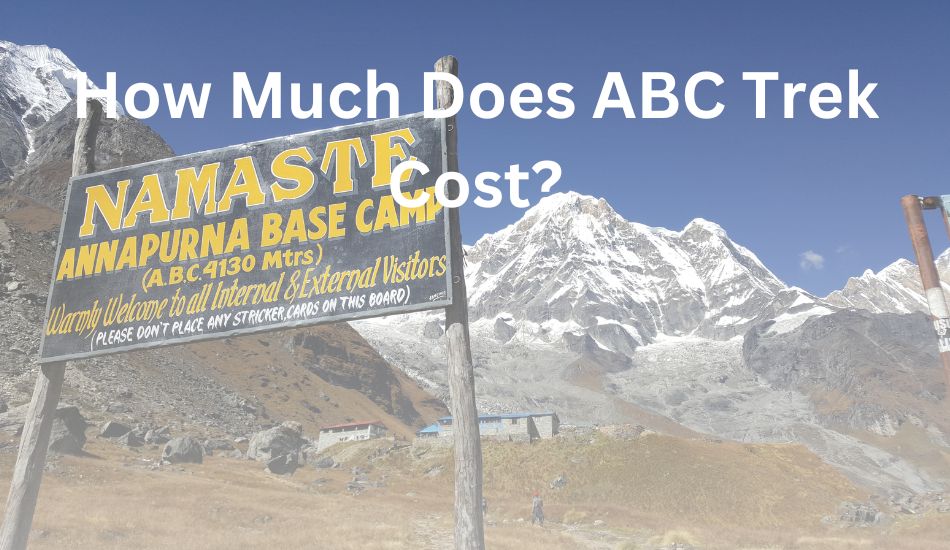
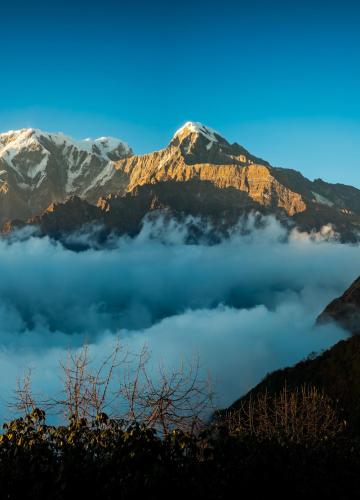
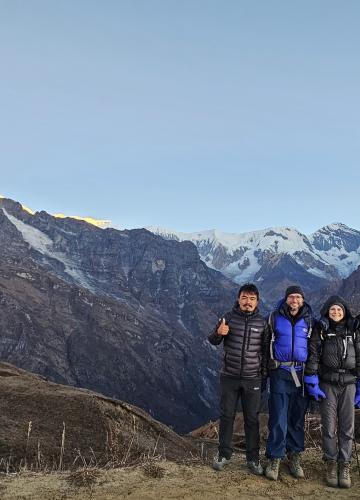
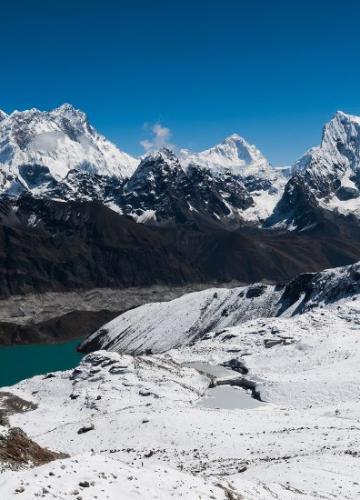
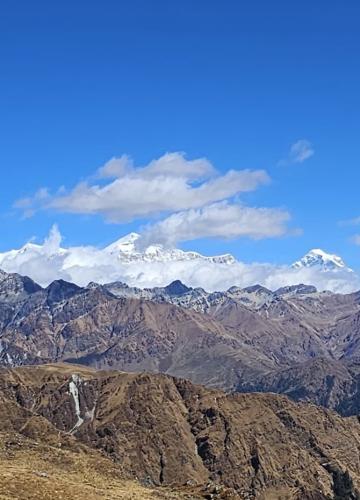
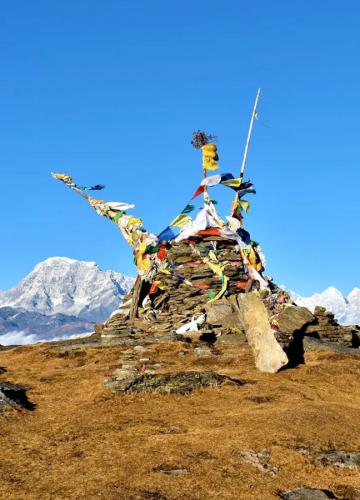

Leave Your Comment